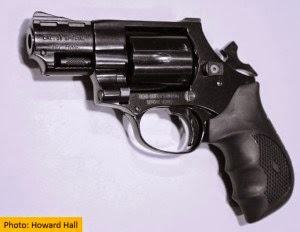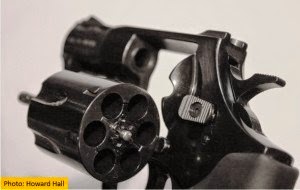ISIS recently issued a global 'order' to target American military members, publishing a list of 100 names along with a variety of personal details. Undoubtedly by now, the U.S. Defense Department has provided security assistance for those named in the publication. Additionally, they have issued a list of instructions to all military families to effectively do what they should have been doing all along which boils down to: keep private and personal information off of social media. There is no simple long term solution to this potential problem.
 Additionally, this is not the first time this has happened. The self-proclaimed Islamic State made this request about a year ago on Jihadi social media sites asking Muslims to attack military personnel, and determined that their families were acceptable targets as well. This attempt to extol the followers of Islam to do violence against military members and their families has resulted is ZERO attacks. I am not saying there is no risk, nor that all American military families should not start to be more careful with the amount of personal information they display on Facebook. What I am saying is that the threat from ISIS here in the United States is rather remote.
Additionally, this is not the first time this has happened. The self-proclaimed Islamic State made this request about a year ago on Jihadi social media sites asking Muslims to attack military personnel, and determined that their families were acceptable targets as well. This attempt to extol the followers of Islam to do violence against military members and their families has resulted is ZERO attacks. I am not saying there is no risk, nor that all American military families should not start to be more careful with the amount of personal information they display on Facebook. What I am saying is that the threat from ISIS here in the United States is rather remote.
When ISIS calls for Muslims to commit acts of violence globally on their behalf, we have a precedent for who responds. Men like Aaron Alton and Zale Thompson, Man Haron Monis, and Martin Roulea respond. These are individuals with extensive criminal backgrounds (all but one violent), who had been recently "radicalized" (converted to Islam), and decided to act out. Is it terrorism when a criminal acts out in the name of Islam, or is just an extension of there penchant for violent behavior? That is the question analysts will study and likely never be able to answer fully; but from a practical perspective, it doesn’t really play into solving the problem.
 What ISIS specifically provides violent criminals is an excuse to act out. The emotional appeal of supporting the establishment of a global caliphate probably has less appeal then the sensational media reports that are likely to ensue. Acting under the banner of Islam provides a higher purpose, then just attacking as a local cop. How much that justification plays into the actions of long-term criminals on the outskirts of society remains to be seen.
What ISIS specifically provides violent criminals is an excuse to act out. The emotional appeal of supporting the establishment of a global caliphate probably has less appeal then the sensational media reports that are likely to ensue. Acting under the banner of Islam provides a higher purpose, then just attacking as a local cop. How much that justification plays into the actions of long-term criminals on the outskirts of society remains to be seen.
What we do know is these Islamic converts are, in these four examples, is ostracized from social opportunity by virtue of their criminal past. They have poor social skills, and were all grossly uneducated. These are the types of people who are attracted to a random call for violence in support of a far off cause. They are quite different from the Boston Bombers, the Charlie Hebdo attackers and other comparatively educated Islamic Extremists. These individuals had received training and support from Muslim Terrorist organizations. These people developed a specific plan and executed it reasonably well.
It is the latter type of Muslim terrorist that has the ability to mount a successful attack against a specific target, not the former. When you look at the impact of a successful attack against military members, it would be significant. While most people are intelligent enough to differentiate between the two types of attacks, the ignorant criminal type of Islamic terrorist is probably not. Meanwhile ISIS takes credit for every criminal follower of Islam who does violence against the West.
When you look at the impact of a successful attack against military members, it would be significant. While most people are intelligent enough to differentiate between the two types of attacks, the ignorant criminal type of Islamic terrorist is probably not. Meanwhile ISIS takes credit for every criminal follower of Islam who does violence against the West.
What we can expect to see is more of the same. Socially inept, disenfranchised, ignorant criminals committing violent acts under the banner of Islam. Those are hard to predict, difficult to identify, and nearly impossible to prevent. Conversely, those capable of planning, waiting, and executing an act of terrorism requires training, support, and intelligence. In seeking this information and skills, they often identify themselves to national and international security forces. This is where we catch and prevent attacks from occurring – and occasionally fail to prevent.
American military families probably have nothing more to fear this week then they did last week or the week before. Yes, they are targets, but the random criminal attracted to Islam is unlikely to successfully pull it off. The Muslim terrorists have yet to pull it off in the United States, and probably not due to a lack of effort. In short, the media frenzy over the threat to U. S. military personnel is not well thought out. It espouses a capability that ISIS has yet to demonstrate and who has largely touted that ability for years.
In closing, ISIS requesting more attacks has not changed the threat profile of their intended target. Hopefully it has raised the awareness of responsible social media use among potential targets (and everyone else).
Author: Patrick Henry (President)
Patrick received his operational training and experience from the U. S. Government, 22 years of which were spent in the Marine Corps where he served in the Reconnaissance, Infantry, and Intelligence fields. Patrick has worked as a contractor and as the Director of Operations at a private paramilitary firm specializing in training military special operations forces and providing protective services to select private clients. His education consists of an MBA from the University of Southern California (USC), and a BS from San Diego State University in Biochemistry, Cell and Molecular Biology and a minor in Psychology. He holds an extensive list of security and training related certifications. He is an active member of Infraguard and the American Society of Industrial Security (ASIS). He has been a guest speaker at ASIS, the San Diego Industrial Security Awareness Council, The Counter Terrorism Symposium hosted by New York’s Mobile Trauma Unit, and other private organizations on physical security, travel security, and competitive intelligence collection counter-measures.
Source: http://aegisacademy.com/community/isis-can-they-target-american-military-personnel-on-u-s-soil/

When ISIS calls for Muslims to commit acts of violence globally on their behalf, we have a precedent for who responds. Men like Aaron Alton and Zale Thompson, Man Haron Monis, and Martin Roulea respond. These are individuals with extensive criminal backgrounds (all but one violent), who had been recently "radicalized" (converted to Islam), and decided to act out. Is it terrorism when a criminal acts out in the name of Islam, or is just an extension of there penchant for violent behavior? That is the question analysts will study and likely never be able to answer fully; but from a practical perspective, it doesn’t really play into solving the problem.

What we do know is these Islamic converts are, in these four examples, is ostracized from social opportunity by virtue of their criminal past. They have poor social skills, and were all grossly uneducated. These are the types of people who are attracted to a random call for violence in support of a far off cause. They are quite different from the Boston Bombers, the Charlie Hebdo attackers and other comparatively educated Islamic Extremists. These individuals had received training and support from Muslim Terrorist organizations. These people developed a specific plan and executed it reasonably well.
It is the latter type of Muslim terrorist that has the ability to mount a successful attack against a specific target, not the former.

What we can expect to see is more of the same. Socially inept, disenfranchised, ignorant criminals committing violent acts under the banner of Islam. Those are hard to predict, difficult to identify, and nearly impossible to prevent. Conversely, those capable of planning, waiting, and executing an act of terrorism requires training, support, and intelligence. In seeking this information and skills, they often identify themselves to national and international security forces. This is where we catch and prevent attacks from occurring – and occasionally fail to prevent.
American military families probably have nothing more to fear this week then they did last week or the week before. Yes, they are targets, but the random criminal attracted to Islam is unlikely to successfully pull it off. The Muslim terrorists have yet to pull it off in the United States, and probably not due to a lack of effort. In short, the media frenzy over the threat to U. S. military personnel is not well thought out. It espouses a capability that ISIS has yet to demonstrate and who has largely touted that ability for years.
In closing, ISIS requesting more attacks has not changed the threat profile of their intended target. Hopefully it has raised the awareness of responsible social media use among potential targets (and everyone else).
Author: Patrick Henry (President)
Patrick received his operational training and experience from the U. S. Government, 22 years of which were spent in the Marine Corps where he served in the Reconnaissance, Infantry, and Intelligence fields. Patrick has worked as a contractor and as the Director of Operations at a private paramilitary firm specializing in training military special operations forces and providing protective services to select private clients. His education consists of an MBA from the University of Southern California (USC), and a BS from San Diego State University in Biochemistry, Cell and Molecular Biology and a minor in Psychology. He holds an extensive list of security and training related certifications. He is an active member of Infraguard and the American Society of Industrial Security (ASIS). He has been a guest speaker at ASIS, the San Diego Industrial Security Awareness Council, The Counter Terrorism Symposium hosted by New York’s Mobile Trauma Unit, and other private organizations on physical security, travel security, and competitive intelligence collection counter-measures.
Source: http://aegisacademy.com/community/isis-can-they-target-american-military-personnel-on-u-s-soil/


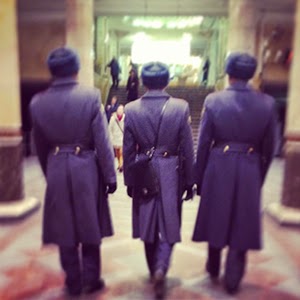


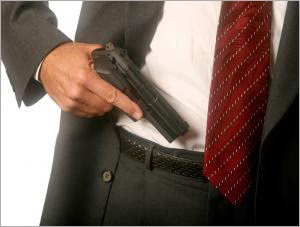
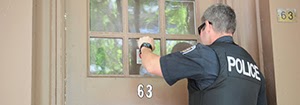

 Welcome back and thank you for returning to read the final installment in the Diagnosing Pistol Malfunctions series. To cover the wide range of topics in this series, I have broken the 8 elements of the cycle of operation into the three commonly accepted types of pistol malfunction.
Welcome back and thank you for returning to read the final installment in the Diagnosing Pistol Malfunctions series. To cover the wide range of topics in this series, I have broken the 8 elements of the cycle of operation into the three commonly accepted types of pistol malfunction. 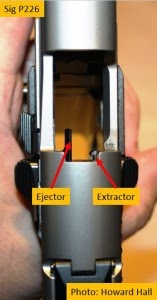 In Part 3, we will discuss the extractor’s profound role as the extractor claw “grips” the cartridge rim as the firearm unlocks and the rearward movement of the slide “extracts” the spent cartridge case from the chamber. As the slide continues its full rearward movement, the extractor maintains proper tension on the cartridge case holding it in position against the breech face until the continued rearward motion thrusts the base of the cartridge case against the ejector. Working in unison, the extractor continues to pull as the ejector pushes the spent cartridge case through the ejection port and away from the pistol… just in time for the slide to begin its forward motion which will feed the next round.
In Part 3, we will discuss the extractor’s profound role as the extractor claw “grips” the cartridge rim as the firearm unlocks and the rearward movement of the slide “extracts” the spent cartridge case from the chamber. As the slide continues its full rearward movement, the extractor maintains proper tension on the cartridge case holding it in position against the breech face until the continued rearward motion thrusts the base of the cartridge case against the ejector. Working in unison, the extractor continues to pull as the ejector pushes the spent cartridge case through the ejection port and away from the pistol… just in time for the slide to begin its forward motion which will feed the next round.
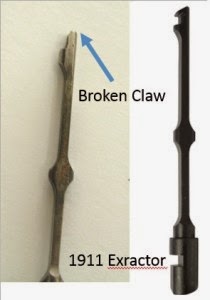 A brief visual inspection of the extractor claw can indicate excessive wear, damage, or a clean break. The photo to the right compares two 1911 extractors. One clearly has a broken claw. The only remedy to this problem is a full replacement. The good news is that most manufacturers produce quality extractors that are very affordable. They can range from $15.00 to $45.00 depending on the "name brand" you go with.
A brief visual inspection of the extractor claw can indicate excessive wear, damage, or a clean break. The photo to the right compares two 1911 extractors. One clearly has a broken claw. The only remedy to this problem is a full replacement. The good news is that most manufacturers produce quality extractors that are very affordable. They can range from $15.00 to $45.00 depending on the "name brand" you go with. 